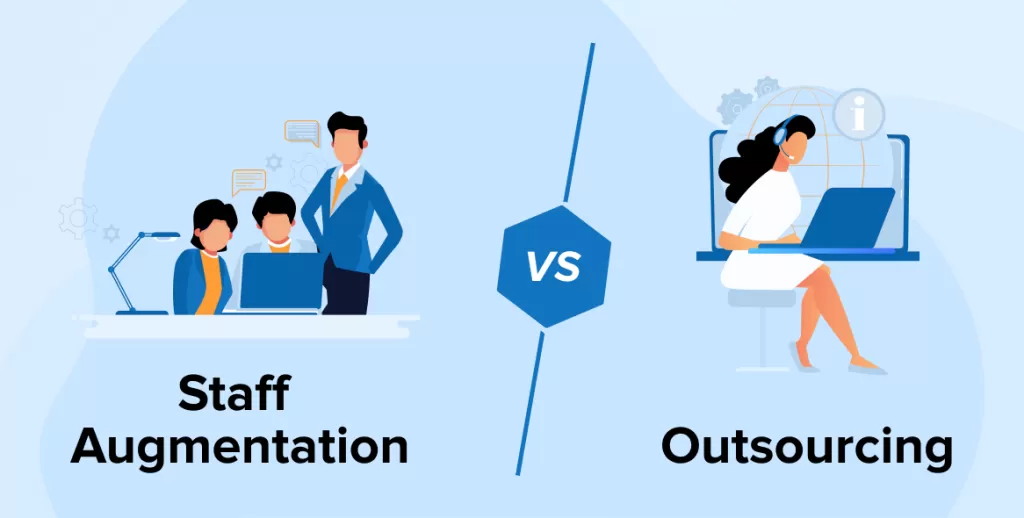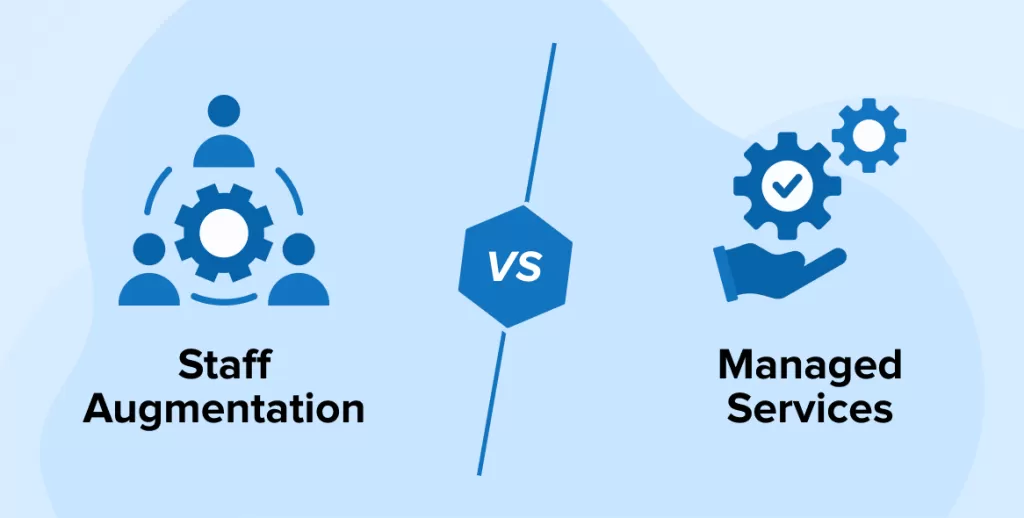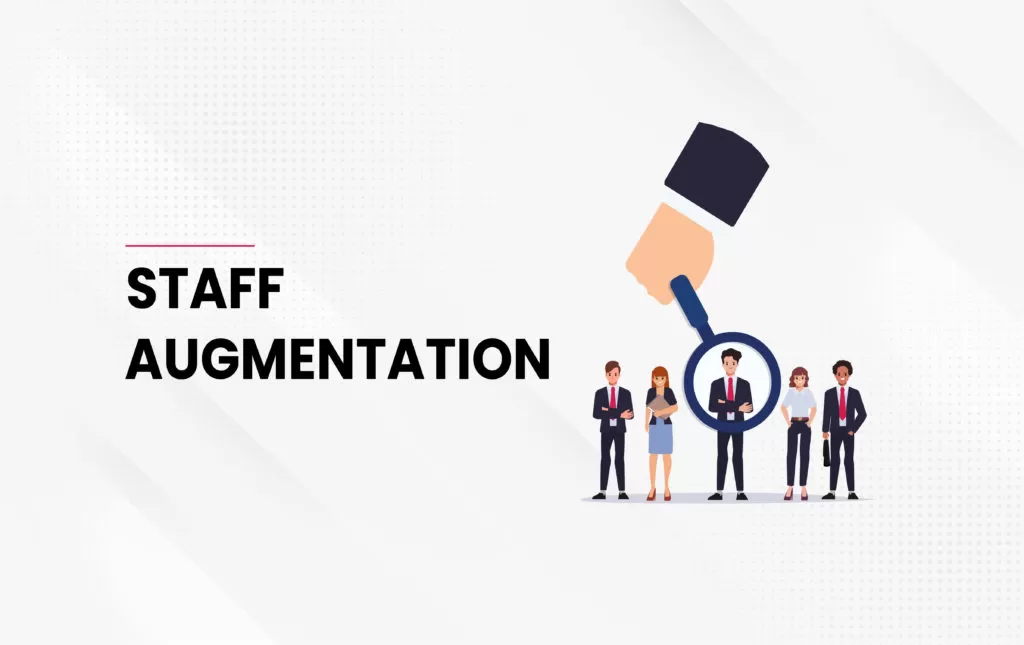Written By:
Scott McAuley
Scott is the IT Director of Texas Management Group, and has been in the IT industry for 25 years.
In today’s dynamic business environment, companies need to stay agile and responsive. Enter staff augmentation—a strategy that promises to bridge skill gaps and ramp up productivity swiftly.
Staff augmentation offers a unique blend of flexibility and expertise, allowing businesses to scale their workforce on demand. By integrating skilled professionals on a temporary basis, companies can address immediate needs without the long-term commitment of permanent hires.
Understanding the pros and cons of staff augmentation is crucial for making informed decisions. This approach can streamline project timelines and inject fresh perspectives, yet it also comes with potential challenges such as integration issues and cost considerations.
In this article, we’ll delve into the key advantages and drawbacks of staff augmentation. Our insights will help you navigate this complex decision-making process. Ready to explore if staff augmentation is the right strategy for your team?
Let’s dive in.
Key Takeaways
- Staff augmentation enables quick integration of skilled professionals to address immediate project needs, maintaining agility and productivity without long-term commitments.
- Benefits include flexibility, expertise access, and cost savings; challenges involve integration issues and dependency on external talent.
- Successful augmentation requires seamless integration with existing teams, ensuring effective communication and minimal disruption.
- Different models cater to various needs, from general IT tasks to specialized projects, providing tailored workforce solutions.
- Ideal for short-term projects, rapid scaling, and meeting tight deadlines, staff augmentation enhances project control and access to global talent.
Table of Contents
What is Staff Augmentation?

Staff augmentation is a flexible and scalable workforce solution that involves hiring temporary external professionals to fill skill gaps and meet specific project demands within an organization. For example, if your company is developing a gaming app and needs seven developers but has only four in-house, staff augmentation allows you to quickly hire the additional three skilled developers. This approach enables quicker project completion and product launch without the delays associated with traditional hiring processes.
Staff augmentation is often a cooperative model that includes outsourcing. This means that once the project is completed, the temporary developers can be released without the complexities of firing permanent employees, thus avoiding legal hassles and documentation associated with full-time employment. This strategy helps organizations maintain agility and focus on core activities while leveraging external expertise as needed.
How Staff Augmentation Works?

Staff augmentation is a strategic approach that involves integrating additional talent into existing teams to meet specific project requirements. This method is particularly effective for companies needing specialized skills for short-term projects or to temporarily fill gaps in their workforce.
Understanding Staff Augmentation
According to a Businesswire report, the worldwide software market revenue is projected to reach $968.25 billion by the end of 2021. Such growth necessitates a large number of software specialists. Statista predicts that the global number of developers will grow to 28.7 million, highlighting the increasing demand for IT talent.
Staff augmentation is a cooperation model where a company expands its in-house staff by temporarily hiring one or several outsourcing IT specialists. These augmented specialists become part of the in-house team and collaborate closely with existing employees. This model is especially beneficial for short-term projects or when specific expertise is required quickly.
The Process of Staff Augmentation
- Identify Needs:
- Determine the specific skills and technical expertise required for your project.
- Engage a Provider:
- Partner with a staff augmentation provider who can assist in sourcing, screening, and selecting qualified professionals.
- Integration:
- Augmented staff integrate with the existing team, working under the company’s direction and alongside its employees.
When to Use Staff Augmentation?
In our rapidly evolving business world, swift and effective solutions are often needed. Staff augmentation is a key strategy in overcoming challenges. It allows companies to supplement their teams with outsourced IT professionals, filling skill gaps and quickly scaling as project needs grow.
| Scenario | Benefits |
|---|---|
| Reinforcing your in-house team | Boost productivity, ensure project continuity, meet deadlines |
| Bridging skill gaps | Access global talent pool, bring in niche expertise |
| Expanding the team fast | Scale rapidly, respond to sudden demands, seize opportunities |
| Meeting tight deadlines | Accelerate progress, ensure on-time delivery, maintain quality |
| When other models don’t work | Retain control, ensure seamless integration, tailor to specific needs |
To Reinforce Your In-House Team
When your team is overworked or lacks certain skills, staff augmentation steps in as a valuable ally. For instance, if your team is developing a new feature but lacks expertise in a specific programming language like Python, bringing in a Python expert for a short period can boost productivity and ensure project continuity. This way, you keep control of your projects while benefiting from the additional skills.
To Bridge Skill Gaps
Technology is ever-changing, requiring specific know-how for various projects. If these skills aren’t in your team already, staff augmentation is the answer. It opens the door to a worldwide talent pool, ensuring your project thrives with unmatched proficiency. For example, if you need expertise in emerging fields like IoT or machine learning for a specific project, you can quickly bring in experts without the long-term commitment of hiring full-time staff.
To Expand the Team Fast
Opportunities can knock when you least expect them. Staff augmentation provides the needed swiftness to meet these challenges. With this approach, growing your team for new projects or sudden upticks in work is quick and efficient. This speed is crucial in industries where being first is everything. For example, a sudden large client order might require rapid scaling of your development team, which can be efficiently managed through staff augmentation.
To Meet the Deadline
Deadline pressures can be daunting, risking project success and quality. Staff augmentation is the targeted fix for this. By adding experts to your team, you swiftly improve your project’s pace, ensuring deadlines are not just met but exceeded. It’s all about maintaining quality without burning out your core team. For instance, bringing in additional developers during the final stages of a project can help you hit your release date without compromising on quality.
When Other Models Don’t Work for You
Not all hiring models fit every company’s needs. When traditional full-time or outsourcing models don’t quite match, staff augmentation steps in. It keeps your project under your direct control, enables close relations with augmented staff, and integrates smoothly with your team. It’s your tailored, flexible solution when others don’t quite measure up. For example, if you need more control over the developer’s work and want to manage the workload directly, staff augmentation offers the flexibility and integration needed.
3 Types of IT Staff Augmentation
When it comes to IT staff augmentation, there are three main types or options that organizations can consider.

Each type offers unique benefits and is suited for different scenarios, depending on the specific needs of the project or function.
| Type | Description |
|---|---|
| Commodity-Based Augmentation | Hires resources for general IT tasks or support. Flexible workforce for filling skill gaps or routine activities. |
| Skill-Based Augmentation | Hires professionals with specific skills. Ideal for project-specific tasks, accessing niche expertise. |
| Highly-Skilled Augmentation | Hires top-tier professionals for complex projects. Provides access to industry experts for critical initiatives. |
1. Commodity-Based Augmentation
Commodity-based augmentation involves hiring resources for general IT tasks or support. This type of augmentation is ideal for organizations that need to quickly fill skill gaps or increase their capacity for routine IT activities. Commodity-based augmentation provides a flexible workforce that can handle a wide range of IT tasks and support functions.
2. Skill-Based Augmentation
Skill-based augmentation focuses on hiring professionals with specific skills and expertise. This type of augmentation is suitable for organizations that require highly specialized resources for project-specific tasks.
Skill-based augmentation allows organizations to access professionals who possess the specific skills and knowledge required to successfully execute complex projects or handle niche areas of expertise.
3. Highly-Skilled Augmentation
Highly-skilled augmentation involves hiring top-tier professionals for specialized roles or complex projects. This type of augmentation is best suited for organizations that require exceptional talent for critical or strategic initiatives.
Highly-skilled augmentation provides access to top industry experts who can bring advanced skills, experience, and innovative thinking to the table, ensuring the success of highly challenging and high-impact projects.
4 Types of Staff Augmentation Services
When considering staff augmentation as a workforce solution, it is essential to understand the various types of services offered by your staff augmentation company.
Each type offers unique benefits and can be tailored to suit specific project requirements and organizational needs.
| Type of Staff Augmentation | Description |
|---|---|
| Team-Based Staff Augmentation | A whole team of professionals is hired to work on a project or function. |
| Remote Staff Augmentation | Augmented staff work remotely and collaborate with the in-house team. |
| On-Site Staff Augmentation | Augmented staff work on-site alongside the in-house team. |
| Project-Based Staff Augmentation | Augmented staff are hired for specific projects. |
1. Team-Based Staff Augmentation
In team-based staff augmentation, a whole team of professionals is hired to work on a project or function. Team augmentation is particularly beneficial for large-scale projects that require a dedicated team with diverse skill sets. By outsourcing an entire team, organizations can ensure seamless collaboration and efficient project execution.
2. Remote Staff Augmentation
Remote staff augmentation involves hiring augmented staff who work remotely and collaborate with the in-house team. This type of service is suitable for organizations looking to access specialized skills and expertise from professionals located in different geographical locations. Remote staff augmentation offers flexibility, cost savings, and broader talent pools without geographic limitations.
3. On-Site Staff Augmentation
In on-site staff augmentation, augmented staff work on-site alongside the in-house team. This arrangement allows for close collaboration, effective communication, and immediate support. On-site staff augmentation is ideal for organizations that require hands-on assistance or prefer to have augmented staff fully integrated into their existing teams and workflows.
4. Project-Based Staff Augmentation
Project-based staff augmentation involves hiring augmented staff specifically for a particular project. This type of service is suitable for organizations with short-term project needs or specialized requirements. By bringing in experts for specific projects, organizations can ensure the efficient utilization of resources and deliver high-quality results within set timelines.
7 Pros of Staff Augmentation
In this section, we will delve deeper into the various advantages of staff augmentation. Staff augmentation offers several key benefits that make it an attractive option for businesses looking to enhance their teams and achieve project success.
Let’s explore these pros of staff augmentation:
| Pros of Staff Augmentation | Description |
|---|---|
| Flexibility in Resource Allocation | Efficiently manage workforce based on project demands, scaling up or down as needed. |
| Quick Access to Expertise | Access specialized skills quickly to fill gaps and accelerate project timelines. |
| Cost Savings | Avoid expenses associated with permanent hiring (salaries, benefits, training). |
| Minimal Disruption to Team | Seamless integration with existing team, maintaining productivity and consistent results. |
| Scalability | Easily expand or downsize team to meet evolving project demands. |
| Access to Specialized Skills | Leverage diverse talent pool for expertise in emerging technologies and industry-specific knowledge. |
| Opportunity for Knowledge Transfer | External professionals bring fresh perspectives, best practices, and industry insights to your organization. |
1. Flexibility in Resource Allocation
One of the major advantages of staff augmentation is the flexibility it provides in resource allocation. By augmenting your team with external professionals, you can efficiently manage your workforce based on project demands. This flexibility allows you to scale up or down as needed, ensuring optimal resource utilization and cost-effectiveness.
2. Quick Access to Expertise
Staff augmentation offers quick access to expertise and specialized skills that may not be readily available within your existing team. Whether you need additional developers, designers, or IT specialists, staff augmentation allows you to tap into a vast pool of talent to quickly fill skill gaps. This enables you to accelerate project timelines and deliver high-quality outcomes.
3. Cost Savings Compared to Hiring Full-Time Employees
Another significant advantage of staff augmentation is the cost savings it offers compared to hiring full-time employees. With staff augmentation, you can avoid the expenses associated with permanent hiring, such as salaries, benefits, training, and onboarding costs. Instead, you can engage temporary professionals on an as-needed basis, optimizing your budget while still accessing top-level talent.
4. Minimal Disruption to Existing Team
Implementing staff augmentation minimizes disruption to your existing team. Augmented staff seamlessly integrate into your workflow, aligning their skills and expertise with your project requirements. This smooth integration process allows you to maintain productivity levels and deliver consistent results without overburdening your in-house team.
5. Scalability to Meet Project Demands
Staff augmentation provides scalability to meet evolving project demands. Whether you need to expand your team for a large-scale project or downsize once the project is complete, staff augmentation allows you to scale your workforce with ease. This agility enables you to adapt quickly to changing business needs and maintain optimal productivity.
6. Access to Specialized Skills
Staff augmentation gives you access to specialized skills that may not be available within your existing team. Whether you require expertise in emerging technologies, industry-specific knowledge, or unique capabilities, staff augmentation enables you to tap into a diverse talent pool and leverage the skills required to drive innovation and achieve project success.
7. Opportunity for Knowledge Transfer
By augmenting your team with external professionals, staff augmentation offers an opportunity for knowledge transfer. Augmented staff can bring fresh perspectives, best practices, and industry insights to your organization, enriching the skillset of your existing team members. This knowledge exchange fosters learning and growth within your team while enhancing your organization’s overall capabilities.
3 Cons of Staff Augmentation
While staff augmentation offers numerous benefits, it is essential to consider the potential drawbacks and challenges that may arise. Understanding the limitations of staff augmentation can help you make informed decisions for your team and projects.
In this section, we will discuss three cons of staff augmentation: integration challenges, lack of long-term commitment, and dependency on external talent.
| Cons of Staff Augmentation | Description |
|---|---|
| Integration Challenges | Difficulty in seamlessly incorporating external professionals into existing teams and workflows. |
| Lack of Long-Term Commitment | Augmented staff may not have the same level of dedication and loyalty as full-time employees. |
| Dependency on External Talent | Reliance on external professionals for specialized skills, which can be risky if the talent pool is inconsistent. |
1. Integration Challenges
One of the main cons of staff augmentation is the integration challenges that organizations may face when incorporating augmented staff into existing teams. Integrating external professionals seamlessly into the workflow and aligning them with the existing team’s goals and methodologies can be a complex process. Effective communication, collaboration, and cultural alignment require careful management and coordination to ensure a smooth integration.
2. Lack of Long-Term Commitment
Another drawback of staff augmentation is the lack of long-term commitment from augmented staff. As external resources, augmented professionals may not have the same level of dedication and loyalty to the organization and its long-term goals as full-time employees. This lack of long-term commitment can impact the continuity of projects, as augmented staff may move on to other assignments or opportunities, potentially leaving behind unfinished work or knowledge gaps.
3. Dependency on External Talent
Staff augmentation relies on external talent to fill skill gaps and drive project success. While this provides access to specialized skills and expertise, it also creates a dependency on external professionals. Organizations become reliant on the availability, reliability, and performance of augmented staff, which can be risky if there are issues with the quality or consistency of the talent pool. Additionally, managing and retaining knowledge within the organization can be challenging when extensively relying on external talent.
Despite these cons, with effective management and strategic planning, organizations can mitigate these challenges and leverage the benefits of staff augmentation to enhance their team’s capabilities and achieve project success.
Staff Augmentation vs Outsourcing
When it comes to expanding your team or fulfilling project needs, two popular options are staff augmentation and outsourcing. While both approaches involve hiring external resources, there are key differences to consider when making a decision.

Here’s a table outlining the differences between staff augmentation and outsourcing:
| Aspect | Staff Augmentation | Outsourcing |
|---|---|---|
| Control Over Resources | Client retains direct control over hired resources. | Client relinquishes control over outsourced tasks. |
| Scope of Engagement | Provides additional resources on a temporary basis. | Entire tasks or projects are outsourced to a third party. |
| Responsibility Division | Hired resources work under client’s direction. | Outsourced tasks are managed by the service provider. |
| Integration with Team | Augmented staff seamlessly integrates with in-house team. | Outsourced tasks may require separate management and coordination. |
| Cost Structure | Typically hourly or daily rates for hired resources. | Fixed or variable pricing models based on agreed services. |
Staff Augmentation vs Managed Services
When considering options to enhance your team’s capabilities and support your business objectives, two common approaches often come up: staff augmentation and managed services. While both offer valuable solutions, it’s important to understand the differences between them to make an informed decision.

Here’s a table outlining the differences between staff augmentation and managed services:
| Aspect | Staff Augmentation | Managed Services |
|---|---|---|
| Resource Control | Client retains direct control over hired resources. | Staffing agency assumes responsibility for managing IT functions. |
| Responsibility Division | Provides additional IT resources on a temporary basis. | Offers comprehensive IT outsourcing solutions. |
| Flexibility vs. Accountability | Offers flexibility in scaling IT resources. | Provides scalability and flexibility in resource allocation. |
| Direct vs. Indirect Involvement | IT professionals work directly under client’s direction. | Staffing agency manages IT operation autonomously. |
| Cost Structure | Typically operates on hourly or daily rates. | Utilizes fixed or subscription-based pricing model. |
How to Choose the Right Staff Augmentation Model?
If you’re considering staff augmentation for your team, it’s crucial to choose the right model that aligns with your project requirements, team dynamics, and skill gaps.
Here are some key factors to consider when selecting the appropriate staff augmentation approach:
- Evaluate Project Requirements: Assess the specific needs of your project, including the required skills, expertise, and experience. Determine the scope and duration of the project to identify the most suitable staff augmentation model.
- Consider Team Dynamics: Understand the dynamics and culture of your existing team to ensure a seamless integration of augmented staff. Look for individuals who can complement your team’s strengths and work well within your established workflows.
- Assess Skill Gaps: Identify the areas of expertise that your in-house team may lack. Determine the specific skills and knowledge required to bridge those gaps and find staff augmentation providers who can offer the necessary expertise.
- Project Duration and Budget: Consider the timeline and budgetary constraints of your project. Evaluate whether short-term or long-term staff augmentation is more appropriate for your needs and financial resources.
- Strategic Goals: Align your staff augmentation model with your organization’s strategic goals. Determine whether you require staff augmentation to address short-term project demands or as a long-term strategy to enhance your capabilities and competitiveness.
- Select a Provider: Choose a staff augmentation provider that aligns with your organization’s needs and values. Consider factors such as the provider’s reputation, track record, industry expertise, and cultural fit.
Conclusion
In today’s dynamic business landscape, staff augmentation stands out as a strategic approach to address skill gaps and enhance productivity without long-term commitments. This method allows companies to integrate specialized professionals quickly, ensuring projects are completed efficiently.
While staff augmentation offers flexibility, access to expertise, and cost savings, it also presents challenges like integration issues and reliance on external talent. Assessing your project needs, team dynamics, and strategic goals is crucial for making informed decisions.
Embrace staff augmentation to maintain agility and drive innovation. Explore the diverse insights at texmg.com to stay ahead and optimize your workforce. Ready to elevate your team? Dive deeper with us and transform your approach today!
Thinking About Adding Specialized Skills to Your Team?
Find guidance in our blogs on staff augmentation, and discover how our IT Consulting Services provide support for successful onboarding and integration.
Build a well-rounded team now!
FAQ
What is Augmentation in the Workplace?
Augmentation in the workplace involves supplementing the existing workforce with additional skilled personnel to meet project demands or fill skill gaps.
What is Staff Augmentation vs. Consulting?
Staff augmentation provides temporary personnel to work under your direction, while consulting involves bringing in experts to offer strategic advice and solutions.
What is Another Word for Staff Augmentation?
Another word for staff augmentation is “personnel augmentation.”
What is Staff Augmentation vs. Outsourcing?
Staff augmentation involves adding temporary staff to your team, while outsourcing involves contracting an external organization to handle specific tasks or functions.






